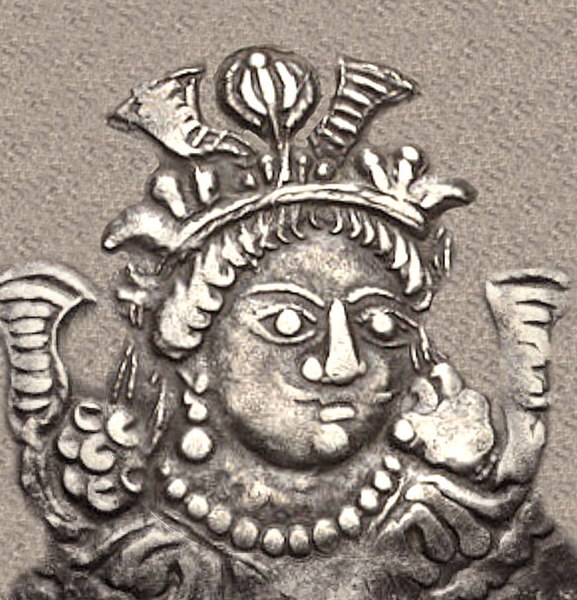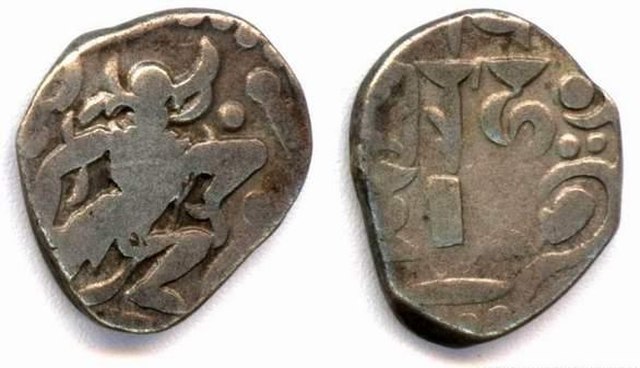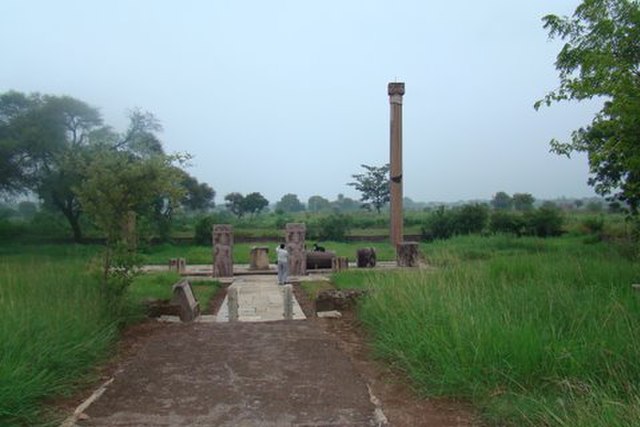The Kidarites, or Kidara Huns, were a dynasty that ruled Bactria and adjoining parts of Central Asia and South Asia in the 4th and 5th centuries. The Kidarites belonged to a complex of peoples known collectively in India as the Huna, and in Europe as the Chionites, and may even be considered as identical to the Chionites. The 5th century Byzantine historian Priscus called them Kidarite Huns, or "Huns who are Kidarites". The Huna/Xionite tribes are often linked, albeit controversially, to the Huns who invaded Eastern Europe during a similar period. They are entirely different from the Hephthalites, who replaced them about a century later.
Portrait of Kidara, king of the Kidarites, circa 350–386. The coinage of the Kidarites imitated Sasanian imperial coinage, with the exception that they displayed clean-shaven faces, instead of the beards of the Sasanians, a feature relating them to Altaic rather than Iranian lineage.
Fire attendants with the kaftan tunic worn over trousers tucked into knee-high boots, and holding swords, on the coinage of Kidara
Fortress of Kafir-kala (Uzbekistan).
The Miracle of Sravasti from Paitava, possibly belongs to the Kidarite period.
Hunas or Huna was the name given by the ancient Indians to a group of Central Asian tribes who, via the Khyber Pass, entered the Indian subcontinent at the end of the 5th or early 6th century. The Hunas occupied areas as far south as Eran and Kausambi, greatly weakening the Gupta Empire. The Hunas were ultimately defeated by a coalition of Indian princes that included an Indian king Yasodharman and the Gupta emperor, Narasimhagupta. They defeated a Huna army and their ruler Mihirakula in 528 CE and drove them out of India. The Guptas are thought to have played only a minor role in this campaign.
Hephthalite horseman on British Museum bowl, 460–479 CE. According to Procopius of Caesarea, they were of the same stock as European Huns "in fact as well as in name", but sedentary and white-skinned.
Gurjara-Pratihara coinage of Mihira Bhoja, King of Kanauj.
Victory pillar of Yashodharman at Sondani, Mandsaur claiming victory over the Huns.
Asia in 500 CE, showing the Huna domain at its greatest extent.








